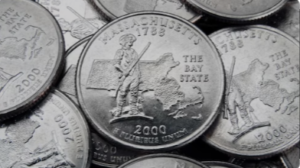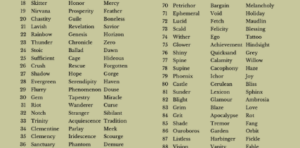What Defines Haute Couture Fashion?
Haute couture is more than just a term; it’s a world where creativity meets impeccable craftsmanship. Imagine garments that are not merely worn but celebrated as pieces of art. Each stitch tells a story, and each fabric choice speaks volumes about the designer’s vision. In an industry often driven by quick trends and mass production, haute couture stands apart as a beacon of luxury and individuality.
But what exactly defines haute couture fashion? It’s not solely about high price tags or red-carpet appearances. This realm encompasses its own rich history, rigorous standards for designations, and influential creators who have shaped the very essence of fashion itself. As we delve deeper into this fascinating topic, you’ll discover why haute couture continues to captivate hearts around the globe—both on and off the runway.
The History and Evolution of Haute Couture
Haute couture traces its roots to the mid-19th century. Charles Frederick Worth, an English designer in Paris, is often credited as the father of this exclusive fashion genre. He revolutionized the industry by showcasing his designs on live models rather than flat illustrations.
As wealthy clients flocked to his salon, haute couture became synonymous with luxury and artistry. These garments were handcrafted, made from exquisite materials tailored specifically for individuals.
The early 20th century saw a golden age for haute couture. Designers like Coco Chanel and Christian Dior emerged, each bringing their unique vision. Chanel introduced simplicity and elegance while Dior celebrated femininity through structured silhouettes.
World events such as wars impacted production and creativity but also paved the way for modern interpretations of haute couture. Today’s designers blend tradition with innovation, ensuring that this esteemed fashion category remains relevant amidst changing trends.
Criteria for Haute Couture Designation
To be classified as haute couture, a fashion house must adhere to strict criteria set by the Chambre Syndicale de la Haute Couture in Paris.
First and foremost, designers must create custom garments made for individual clients. These pieces are tailored specifically to fit each customer’s unique measurements.
Additionally, haute couture collections are presented twice a year during Fashion Week in Paris. Each collection typically includes at least 50 original designs for both day and evening wear.
A significant focus is placed on craftsmanship. Garments often feature intricate details such as hand-stitched embroidery or elaborate draping techniques that showcase exceptional skills.
Furthermore, the use of high-quality fabrics is essential. Only luxurious materials qualify for these one-of-a-kind creations.
An atelier—specialized workshops employing skilled artisans—is required to ensure that every piece meets the stunning standards associated with this prestigious label.
Famous Haute Couture Designers and Their Characteristics
The world of haute couture is filled with visionaries who have redefined fashion. Designers like Coco Chanel, known for her timeless elegance and the iconic little black dress, revolutionized women’s wear.
Christian Dior’s “New Look” introduced voluminous skirts and a return to femininity after World War II. His designs emphasized an hourglass silhouette that remains influential today.
Givenchy brought sophistication through simplicity, dressing style icons like Audrey Hepburn in understated yet stunning pieces. His ability to combine comfort with chicness set new standards.
On the avant-garde side, Alexander McQueen challenged norms with theatrical designs that fused art and fashion. His unique approach often sparked dialogue about beauty and identity.
Karl Lagerfeld left an indelible mark on Chanel by blending modern elements with classic heritage. Each designer’s distinct characteristics contribute to the rich tapestry of haute couture history.
The Impact of Haute Couture on the Fashion Industry
Haute couture has profoundly shaped the fashion industry, serving as a beacon of creativity and craftsmanship. It pushes boundaries, inspiring ready-to-wear collections and influencing trends worldwide.
The meticulous artistry involved in haute coutue sets standards for quality and innovation. Designers experiment with fabrics, techniques, and silhouettes that often trickle down into mainstream fashion.
Moreover, haute couture acts as a platform for cultural expression. It showcases diverse influences and narratives through garments that resonate beyond mere aesthetics.
Fashion shows featuring are spectacles of luxury, drawing attention from celebrities, influencers, and media outlets alike. This visibility fuels interest in high-fashion concepts while elevating brands to iconic status.
Emerging designers frequently look to haute coture for inspiration when developing their signature styles. The impact is undeniable; it cultivates an environment where creativity flourishes across all fashion sectors.
Controversies Surrounding Haute Couture
Haute couture often finds itself at the center of heated debates. Critics question its relevance in a world that increasingly values sustainability and accessibility.
The exclusivity surrounding haute can be seen as elitist. Many argue that fashion should not only cater to the wealthy elite but also celebrate diversity and inclusion across all socioeconomic backgrounds. The high price tags attached to these garments fuel this controversy.
Additionally, some designers face accusations of cultural appropriation. When elements from diverse cultures are incorporated without proper acknowledgment, it raises eyebrows and ignites discussions about respect versus exploitation.
Furthermore, the industry grapples with issues related to labor practices. The intricate craftsmanship involved is often overlooked, leaving questions about fair wages for skilled artisans who bring these masterpieces to life.
These controversies highlight complex dynamics within haute couture, revealing layers beyond just fabric and thread.
How Haute Couture Continues to Influence Fashion Today
Hate couture remains a powerful force in the fashion industry, shaping trends and setting standards for creativity and craftsmanship. Its influence extends far beyond the runway, inspiring ready-to-wear collections and everyday styles.
Designers look to haute coutue for innovative techniques and unique silhouettes. The artistry involved drives many to push boundaries in their own work, whether it’s through fabric choice or avant-garde designs. Haute couture also serves as a benchmark of quality that resonates with consumers seeking luxury.
Fashion houses often use haute couure shows as a platform to showcase their vision. These events attract attention from press, celebrities, and buyers alike. The buzz created not only elevates brand image but also drives sales across all product lines.
Moreover, social media has opened new avenues for haute coutue exposure. Designers share behind-the-scenes processes on platforms like Instagram or TikTok. This democratization allows wider audiences to appreciate the intricate details that define these masterpieces.
Sustainability has become another essential aspect of modern discussions. As designers evolve their practices toward eco-friendly materials and ethical labor methods, they set an example for mainstream fashion brands to follow suit.
The allure of haute coutur lies not just in its garments but also in its ability to inspire future generations of designers while simultaneously captivating enthusiasts around the world with timeless elegance.












Post Comment